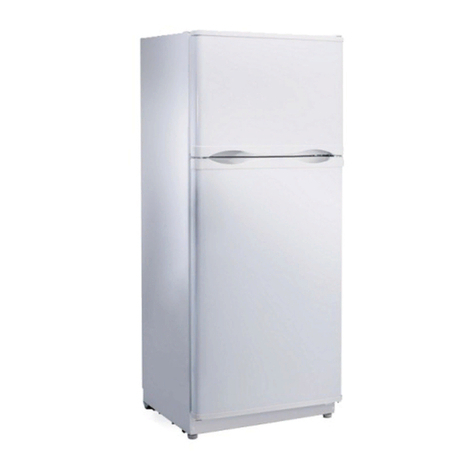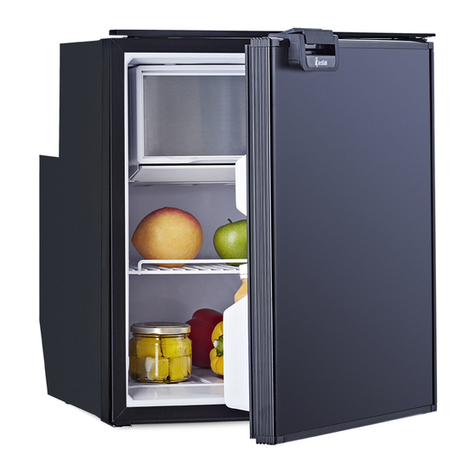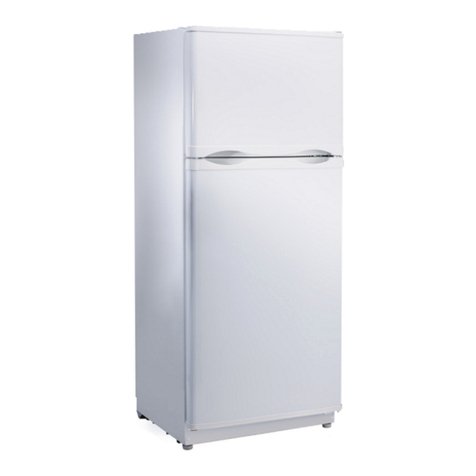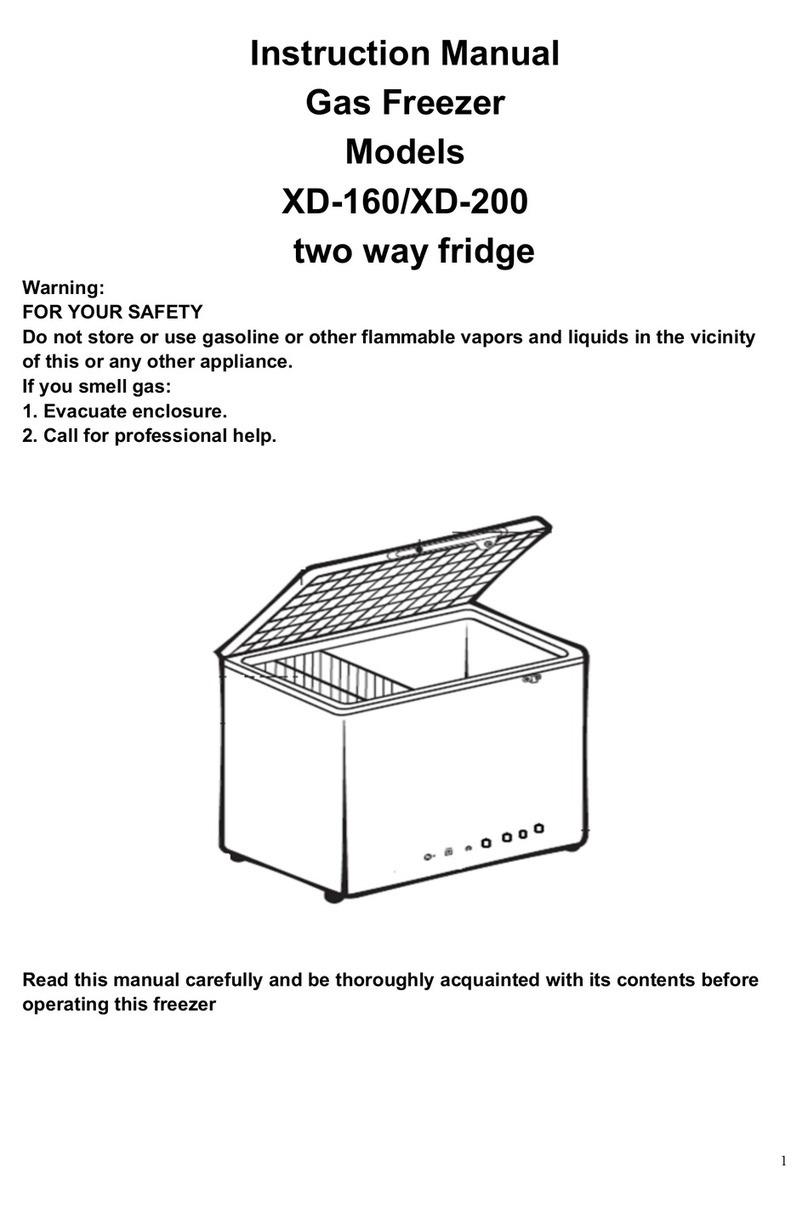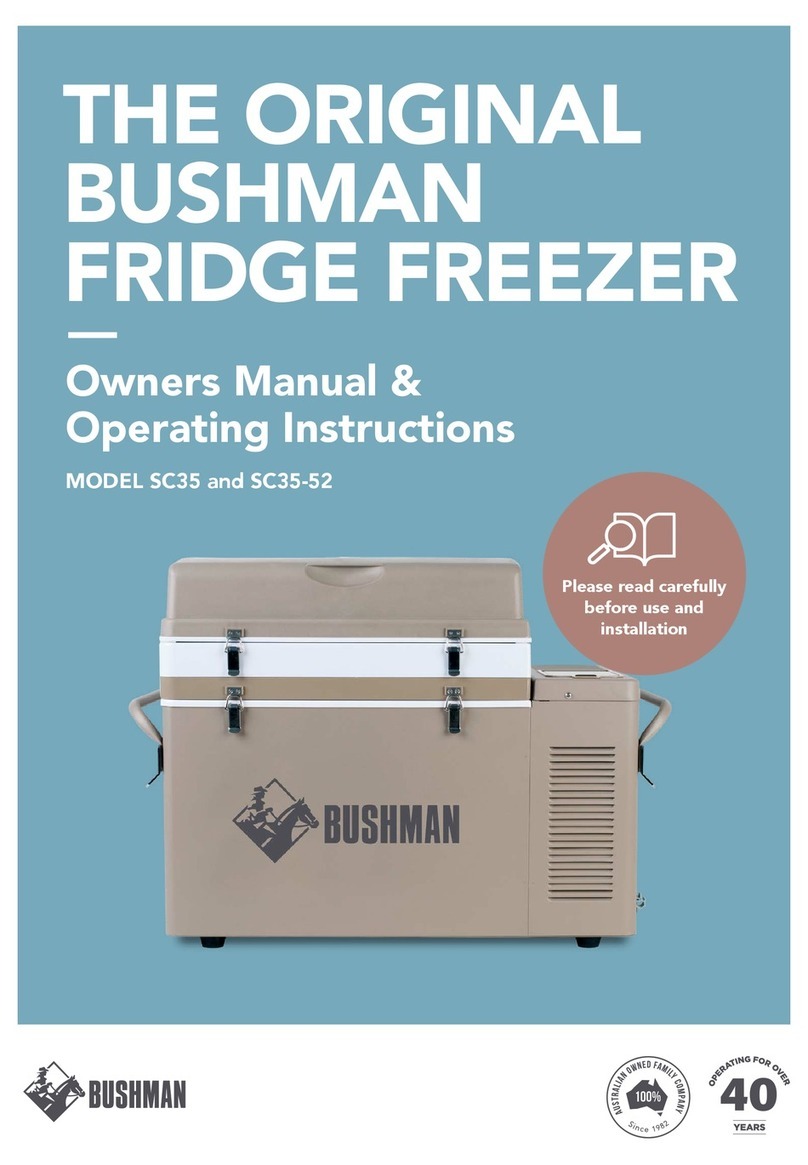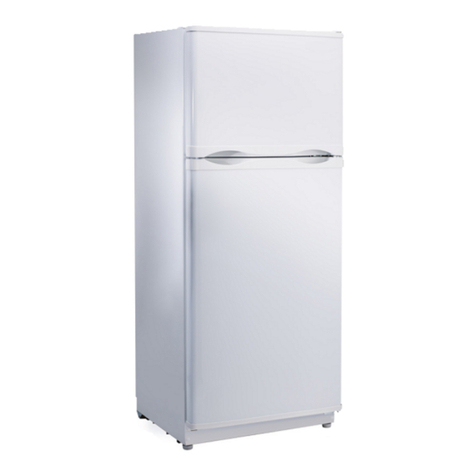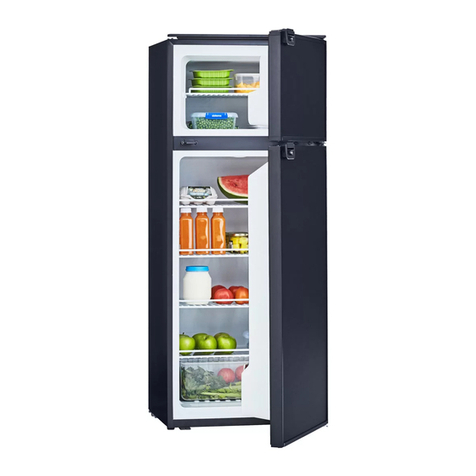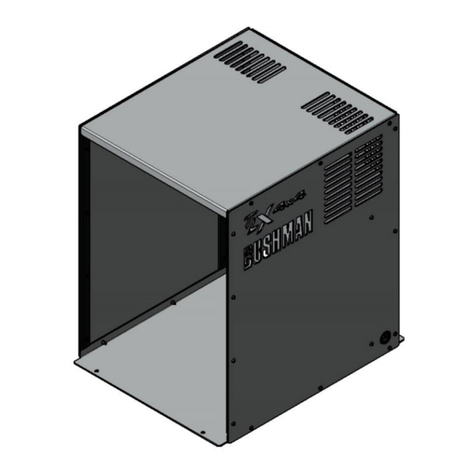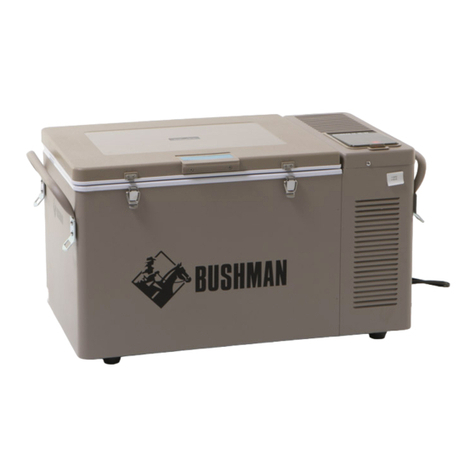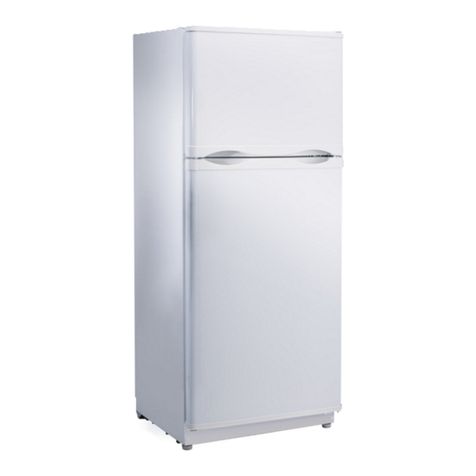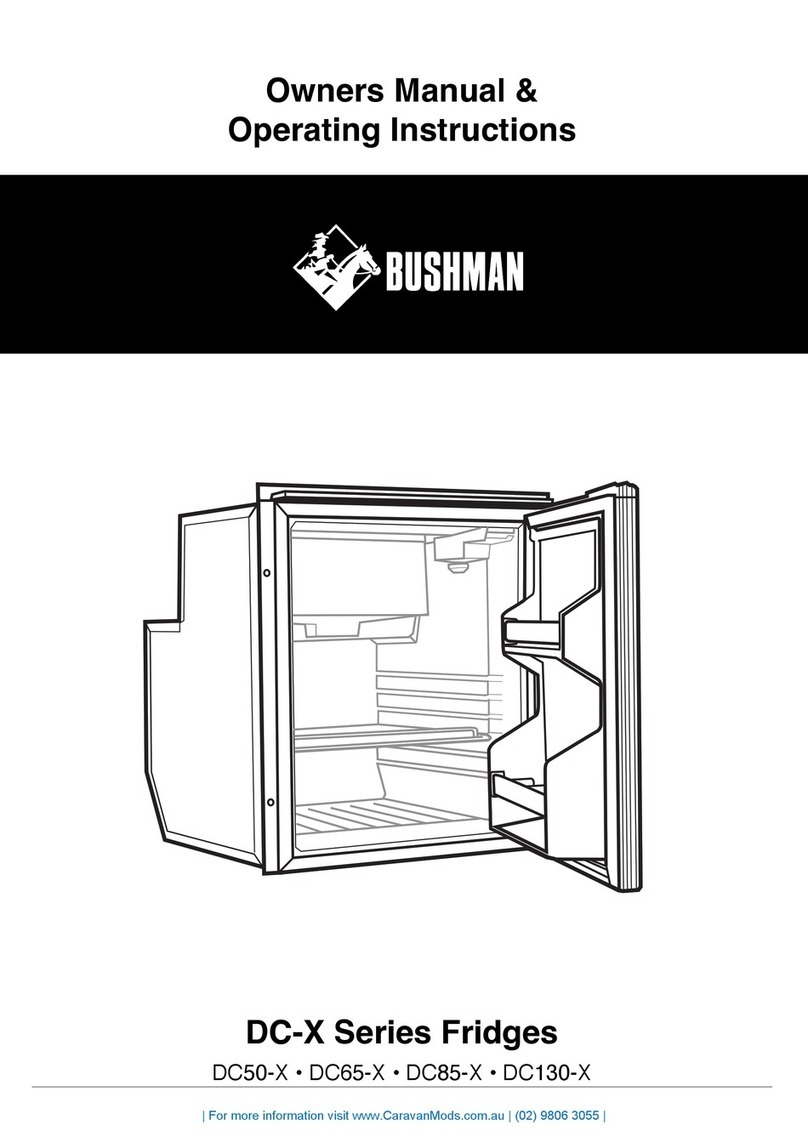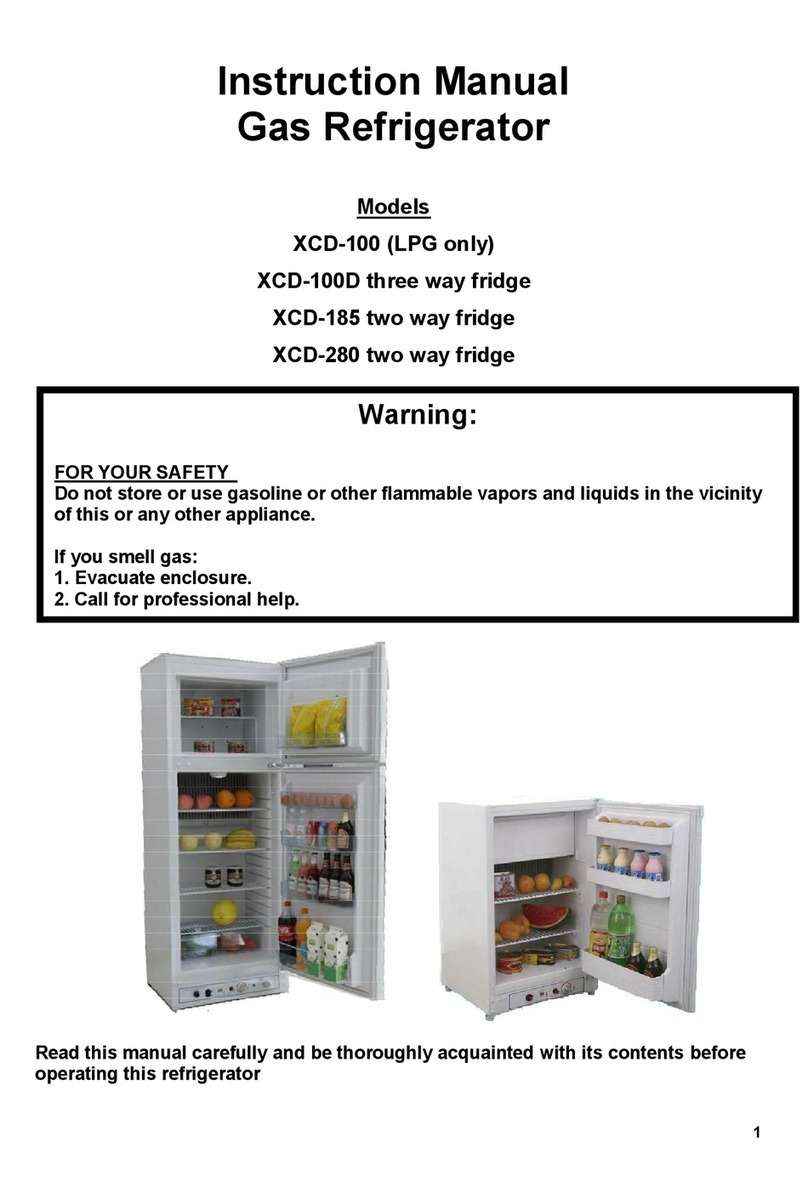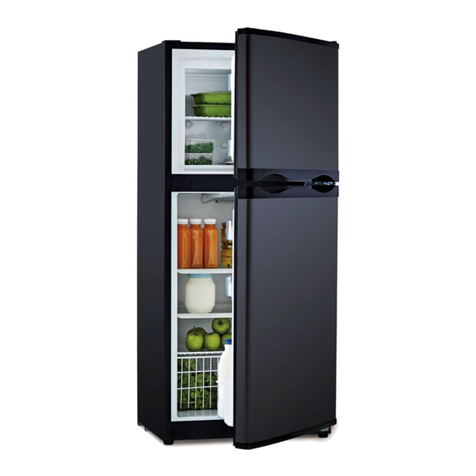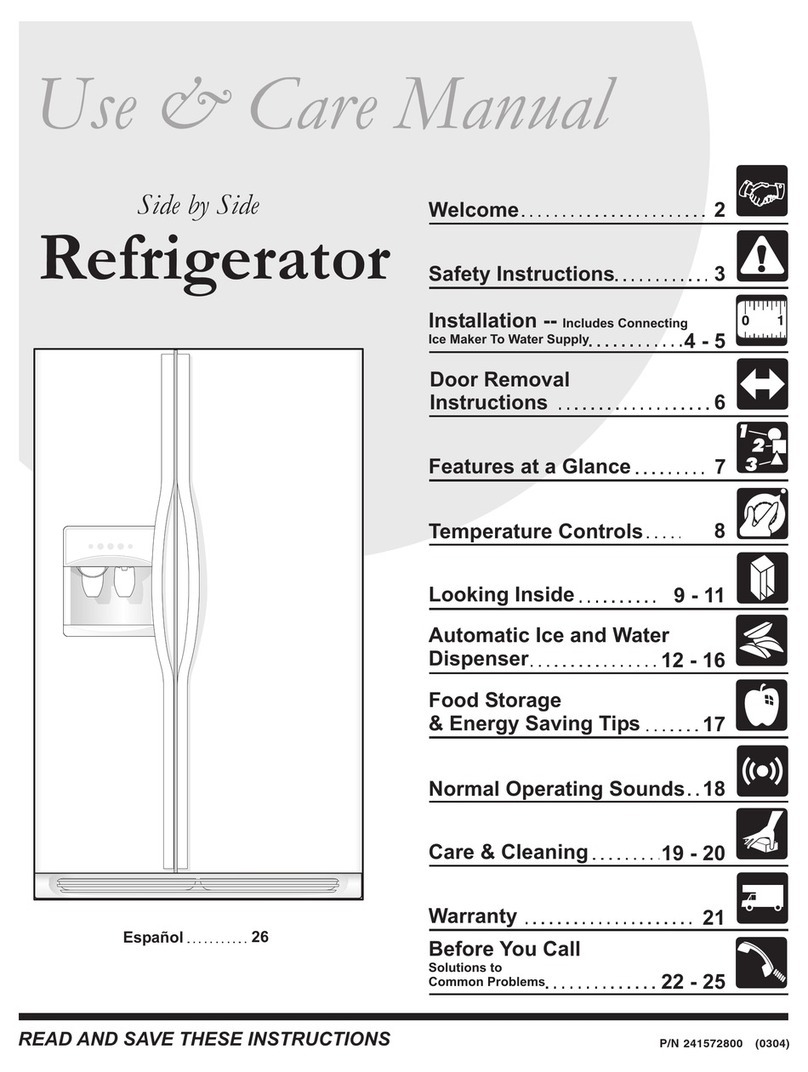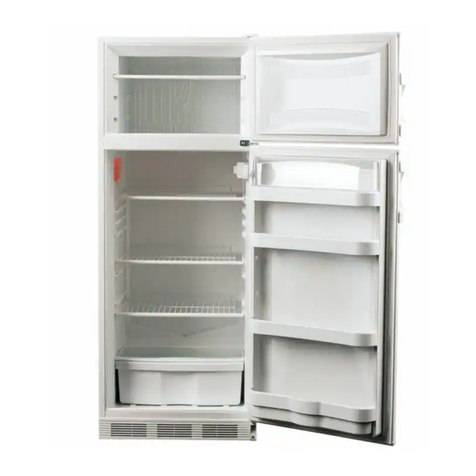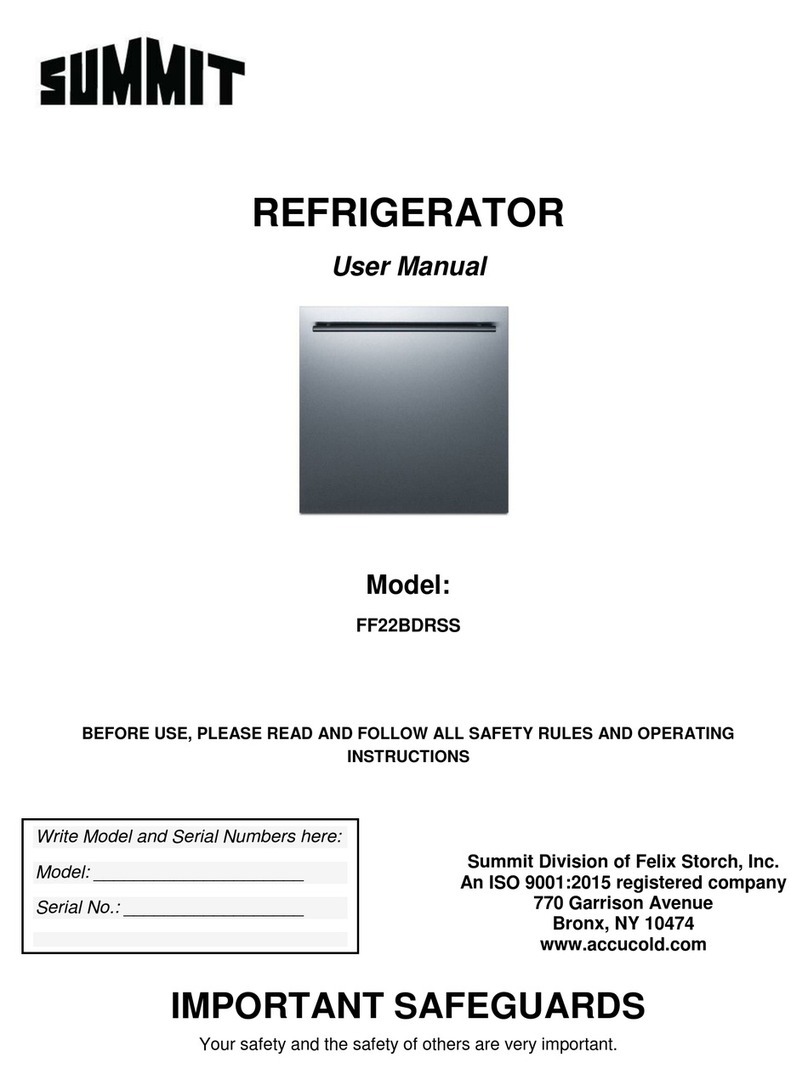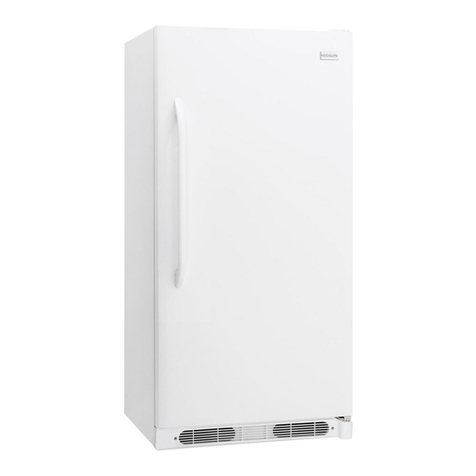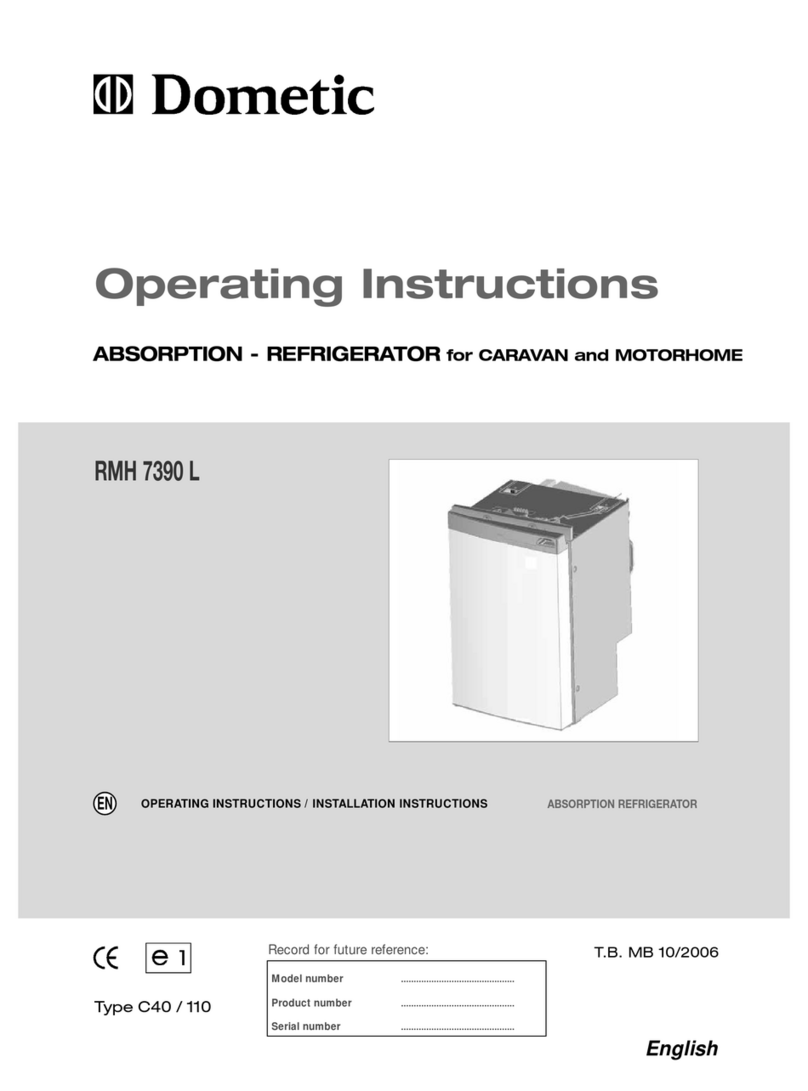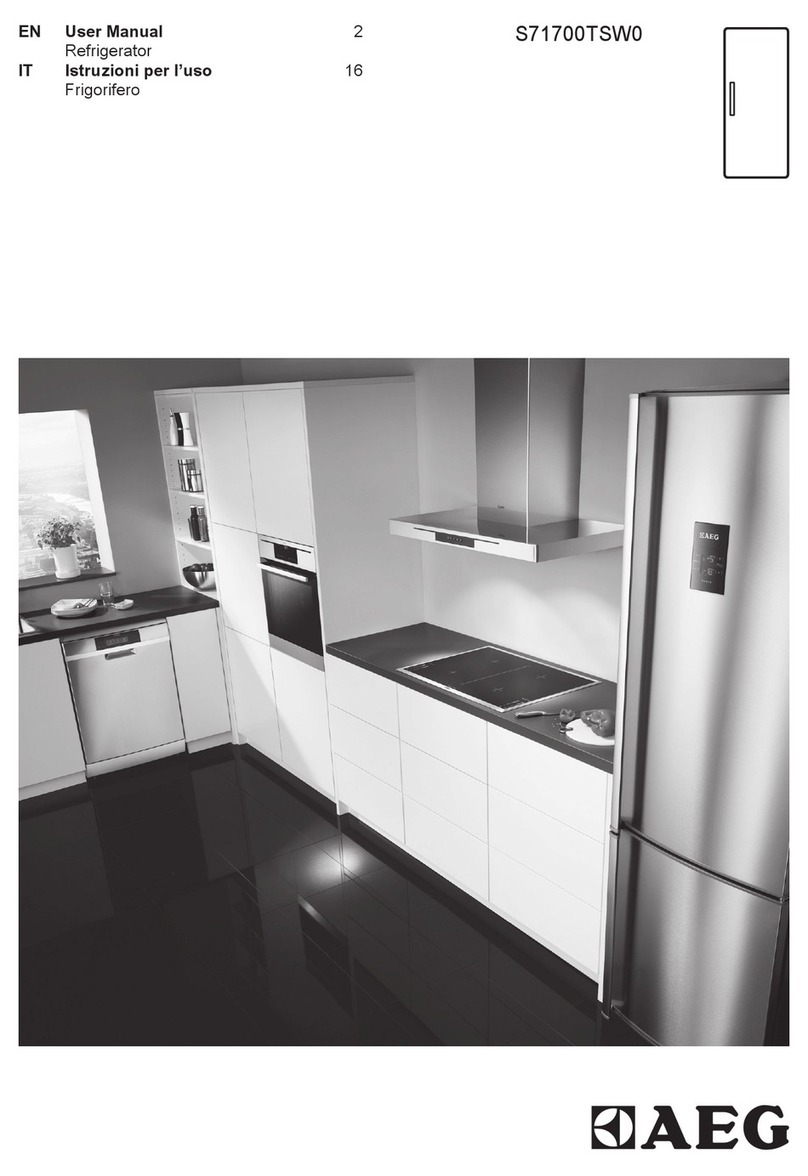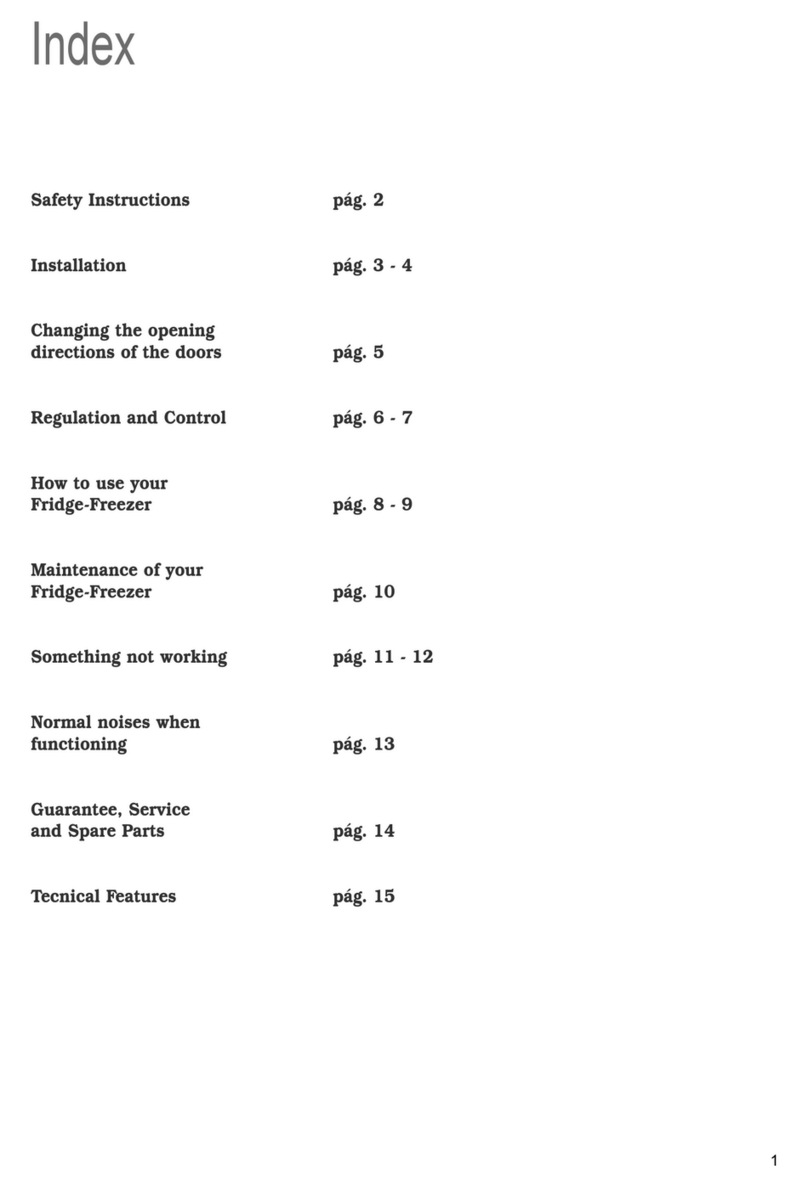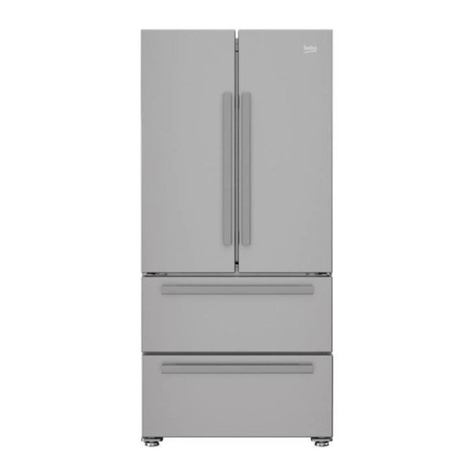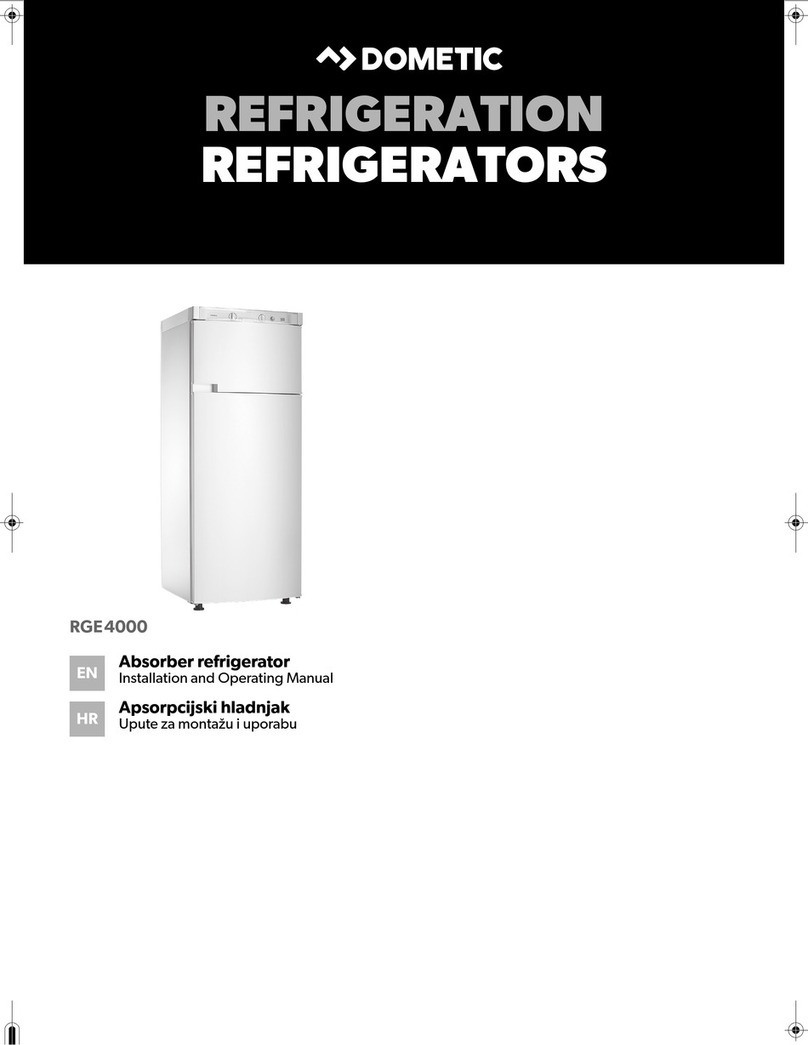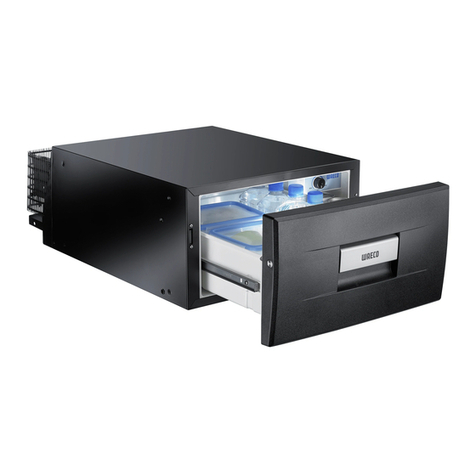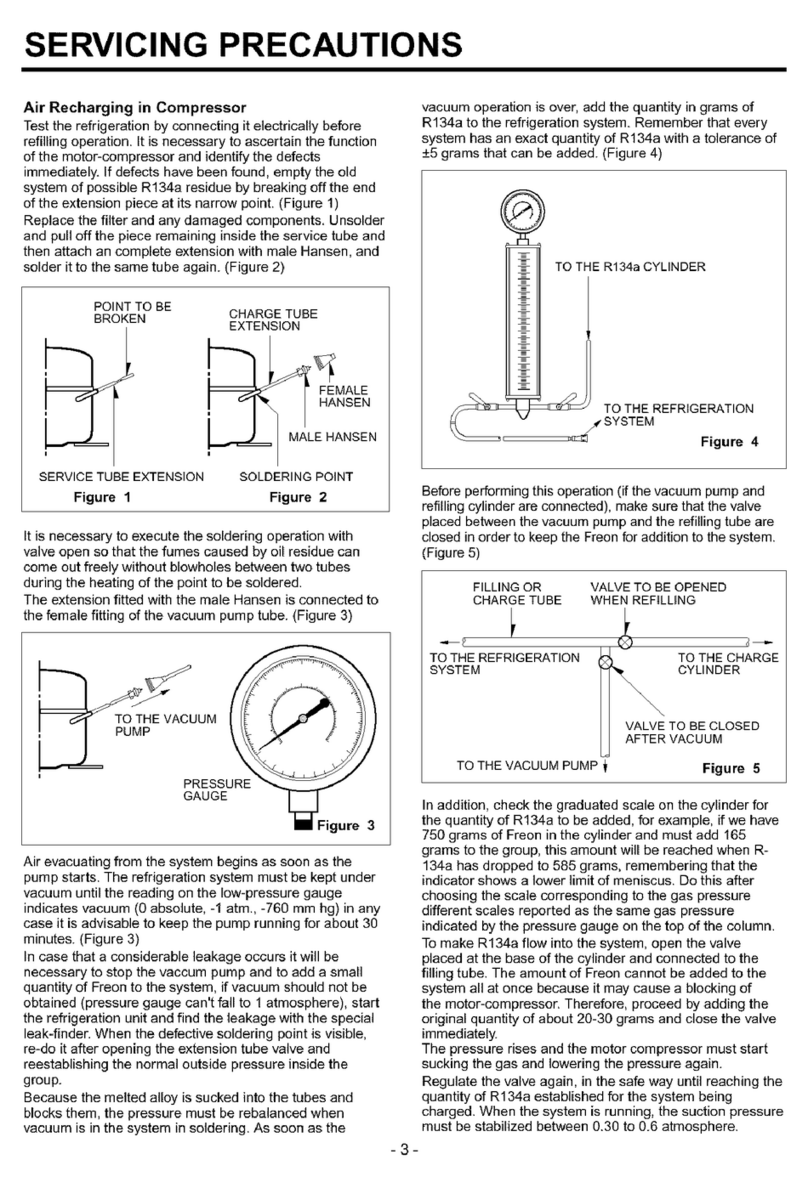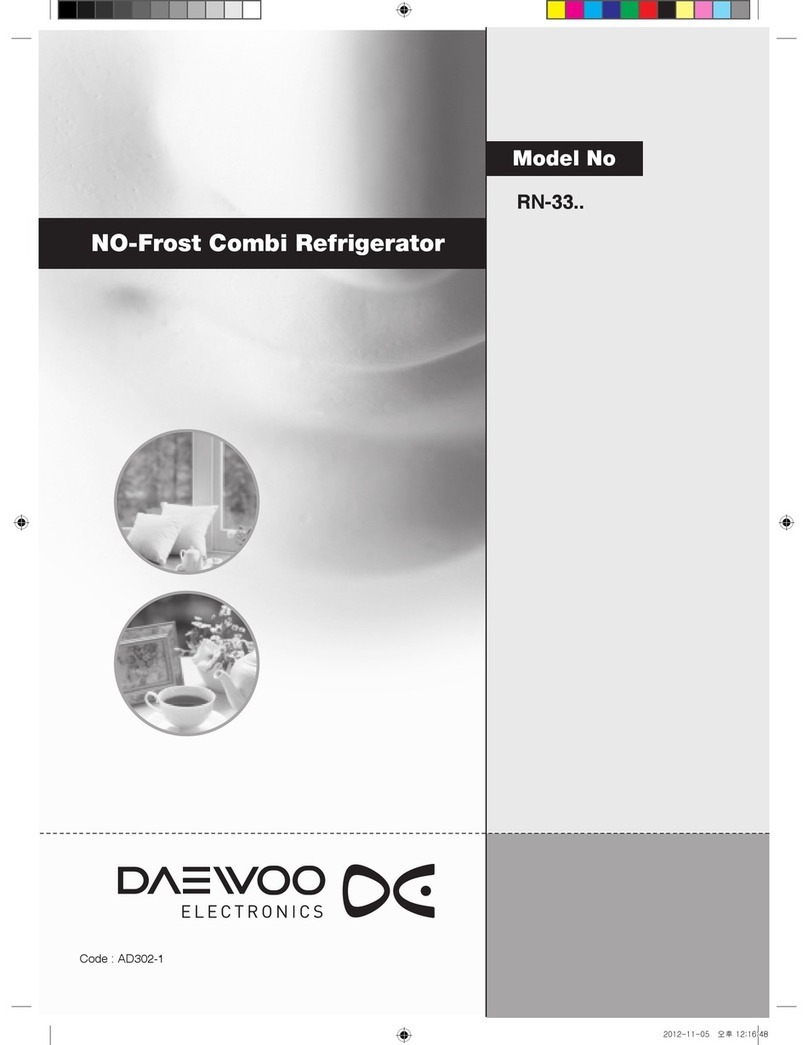
TROUBLESHOOTING GUIDE
Please check each of these 4 points. All 4 need to be right for your fridge to operate correctly.
1. VOLTAGE
The most common cause of an incorrectly functioning fridge, or a fridge that starts and stops and doesn’t get cold, is
a lack of consistent voltage. Danfoss compressors have built in battery protection and need the following minimum
voltage for the compressor to start (Cut-in) or stop (Cut-out).
Note that when the compressor starts it will draw approximately 8A for 1⁄2 second to turn the compressor over.
When this 8A load is applied, the voltage can drop by 2V - 3V, causing the compressor to turn off again.
This often happens at night when the battery gets a bit lower (no solar input) or when the car alternator hasn’t been
started for a while (no alternator input) or if there is a weak spot somewhere in the electrical system (weak join, weak
solder, undersized wire, worn battery).
To isolate this problem, use a different, direct power supply
Connect the red and black power wires from the compressor directly to a different 12V power source (for example a
fully charged deep cycle 12V battery). It is important to run these two wires directly to the power source, without any
unnecessary connections, plugs, solar, battery management, power distribution or buss bars. If the fridge now runs
correctly, there is a power supply issue somewhere.
Get an electrician to check
• The polarity of the connections are correct
• The wiring between the fridge and battery is correctly sized – see page 2
• Any connections or joins in the wire between the fridge and the power source are 100%
• The battery is not wearing out and is capable of consistently providing 12 volts when a 10 amp load is placed on it
• The voltage to the compressor is still 12V when a 10 A load is placed on the wires
2. VENTILATION AND AIR-FLOW
• There is adequate ventilation and free air flow to the compressor area – see page 6 + 7
• The fridge is not installed in a sealed cavity, container or canopy
• The condensor fan is operating
3. ICE BUILD UP
Ice will slowly build up on the freezer section over many weeks. This is a normal part of the operation of a low-power
cooling system. Excessive ice build-up is a problem as the ice eventually insulates the cooling element and hinders
the fridge’s ability to cool. In this instance, turning the thermostat up to flat out (6 or 7) will cause ice to build up even
faster. Therefore, slowing the ice build-up from the start is the key.
Check
• The rubber door seal is touching the fridge cabinet all the way around on all 4 sides – see page 5
• The door latch has a tight fit when closed – see page 5
• The door closes freely without rubbing on anything – see page 4
• Defrost the fridge and start again see page 4
5. OPERATING THE FRIDGE
• Space items in the fridge – see page 3
• Set the thermostat to the lowest number possible – see page 3
• Only open the fridge or freezer door for short periods of time and when necessary
• Do not place hot or wet items inside the fridge

